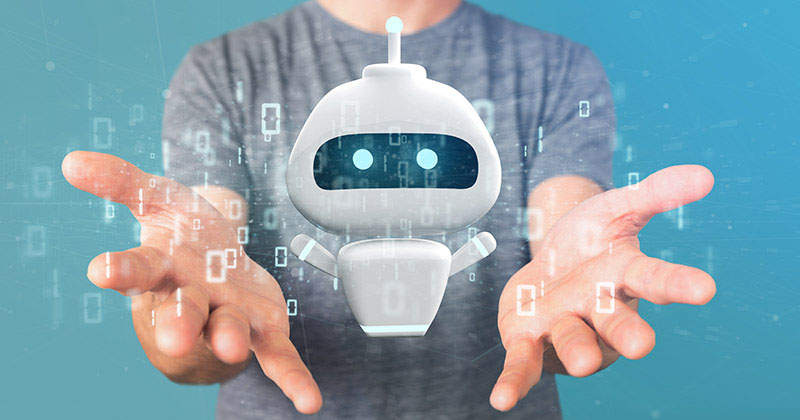Clearly, chatbots are here to stay. Not all are made equal, however – the choice of technology is what sets great chatbots apart from the rest. Despite 80% of surveyed businesses wanting to use chatbots in 2020, how many do you think will implement them well? Only 33% of customers prefer using them over a simple conversation with a human agent – and that figure won’t rise if the majority of chatbots aren’t up to snuff.
On principle, all chatbots work by utilising some form of natural language processing (NLP). This can range from simply recognising certain keywords (basically turning the chatbot into a glorified menu system) or by using sophisticated machine learning to detect the intent and context of a phrase.
Our recently published paper, Transformer-Capsule Model for Intent Detection, demonstrated the results of our long-term research into better NLP. It also topped the Intent Recognition Leaderboard, with an accuracy result of 0.9889.
But what does it all mean? What is intent detection, and why is it important? What do all the buzzwords mean? Join us as we take you on a journey of discovery into the technology powering the most important shift in both marketing and customer service!
Intent detection – what is it?
In simple terms, intent detection is the process of algorithmically identifying user intent from a given statement. That’s a lot of words to describe a rather simple process, so let’s take a look at an example.
Let’s say the user says a phrase like “I’d like to book a ticket for Paris on the 27th of April”.
A standard rule-based chatbot would just detect the phrase “book a ticket” and direct the user to a booking page, discarding all of the additional information.
An AI-powered chatbot, however, would not only detect the intent of booking a ticket but also recognise the additional data: the destination and departure date. As a result, it would also determine what extra data is needed – like which airport the user would be flying from, and whether or not they wanted a return ticket.
Proper intent detection is what makes real chatbots shine and what sets them apart from being just another menu system.
How intent detection works – step by step
Of course, while the concept may be simple, its implementation has proven challenging. AI researchers have been building chatbots for well over sixty years. Yet truly responsive chatbots are a relatively new achievement.
The way intent detection works is complicated and often daunting to newcomers. We’re not going to lie – there’s a lot you need to wrap your head around.
Here’s how a rudimentary chatbot detects user intent:
- Take user statement
- Scan the statement to search for keywords: for every word in the statement, look for an association in the chatbot’s database
- If there’s a conflict – for instance, two different intents are detected – make a decision on which one to present to the user, whether randomly or by other means
- Send an appropriate response
Of course, this is extremely simplified and only appropriate for extremely simple conversational user interfaces – not chatbots.
A true chatbot would operate more like this:
- Take user input
- Break the statement apart into its base elements using natural language processing techniques
- From these base elements, locate the statement’s subject and verb
- Using a database of word/intent associations, find and select the best possible match
- If no match is found, ask for user clarification; once that is provided, add the new words into the association database
- Determine whether the statement contains additional useful data
- Prepare an appropriate response
Of course, this is still an extremely simplified overview of how chatbots work. For a more in-depth analysis of the current trends and techniques in text mining and intent detection, take a look at this meta-analysis by Hamroun and Gouider, or have a read through the various papers on the Intent Recognition Leaderboard.
The challenges of intent detection
One of the biggest challenges in building successful intent detection is, of course, natural language processing. That in itself is a vast field requiring expertise and cooperation between computer science and linguistics. For that reason, we at SentiOne collaborate heavily with linguistics departments at leading European universities (e.g. at the SentiCognitiveServies project).
Of course, that’s not all. A solid dataset is the backbone of every chatbot worth its salt – and their learning capabilities are what makes or breaks intent detection. This is where machine learning comes in.
Truly effective chatbots are the ones that learn from each interaction with a user – and this is easier said than done. Machine learning brings with it its own challenges, like preparing a solid initial training dataset, making sure the bot recognises colloquialisms in user input, providing it with enough time and effort. It’s an extensive, arduous process, but it can be made easier with proper tooling.
Industry examples of intent detection
You don’t have to look far to find examples of good intent detection – Apple’s Siri and Amazon’s Alexa are both examples of very strong intent detection. These are chatbots designed to take care of a wide variety of tasks – looking up information, playing media, controlling smart home devices, and more. They need to understand user intent across a variety of contexts, accents, and (most importantly) functionalities.
On the other side of the spectrum are smaller chatbots, built for a specific purpose. One of the first widely discussed chatbots was the one deployed by SkyScanner in 2016. Since its inception, its intent recognition capabilities grew – it can handle complex queries with multiple data points.
While industry giants, such as the aforementioned Apple and Amazon, keep the results of their intent recognition development to themselves, a lot of companies exchange public funding for cooperation with leading learning institutions. Thanks to these partnerships, research results are made public and freely available.
The business value of good intent detection
Good intent detection results in good chatbots. By employing state of the art intent detection, your chatbots can handle even complex or ambiguous tasks – allowing you to extend their functionality endlessly.
Chatbots like that, then, reduce the workload on your customer service department, since agents aren’t bogged down by repetitive tasks every single day. This, then, translates into more customer – and employee – satisfaction.
Offering strong functionalities within your chatbots also attracts more technology-oriented customers, among them the coveted millennial and gen z demographics. These are people who grew up immersed in a technological culture of instant gratification: they require results the moment they ask a question. State-of-the-art intent detection will allow you to satisfy their needs.
A closer look: the transformer-capsule model
So how does SentiOne do intent detection? We asked our AI researchers to explain:
Our AI team has developed a model with intent accuracy recognition at 98% – exceeding previously existing solutions, which was shown on the well known ATIS dataset and featured as number 1 on Papers with Code. The solution is based on a Transformer-type neural network, used in the BERT model as well, that has recently triumphed in the field of machine learning and natural language understanding. We have developed this approach in order to obtain better results by combining it with so-called capsule networks, previously used in the field of image recognition. This type of neural network performs really well in modelling relationships between concepts and allows for better understanding of natural language
Michał Lew, Head of AI and responsible for the project





